An uplifting refit for Iona
Explore more on Latest News
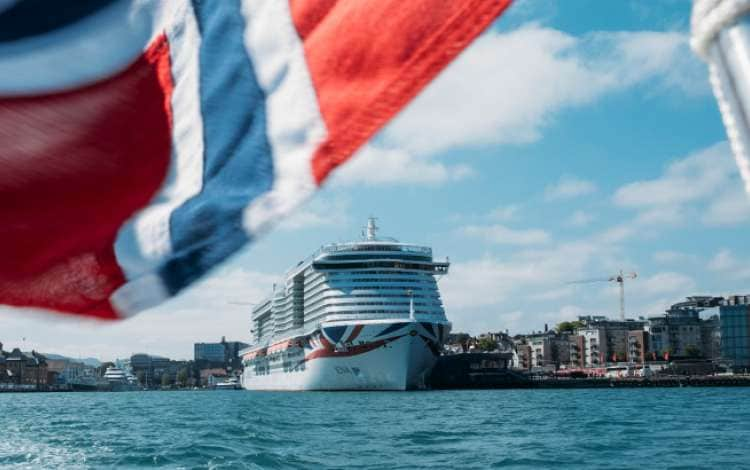
On a sunny day out in the Norwegian fjords, Kjartan Skjelde and Marco Pierre White took us on a culinary quest to taste the finest, freshest ingredients Norway has to offer.
A cruise with P&O Cruises Local Food Heroes is a chance to connect what you eat with where it came from. On this Food Heroes cruise to the majestic Norwegian fjords, we took the principles of provenance to the next level.
To introduce us to Norway’s bounty, Local Food Hero and Norwegian chef Kjartan Skjelde took us on a food-focused expedition of the islands that surround his hometown of Stavanger. And we were in good company, joined by Food Hero and godfather of British cooking Marco Pierre White.
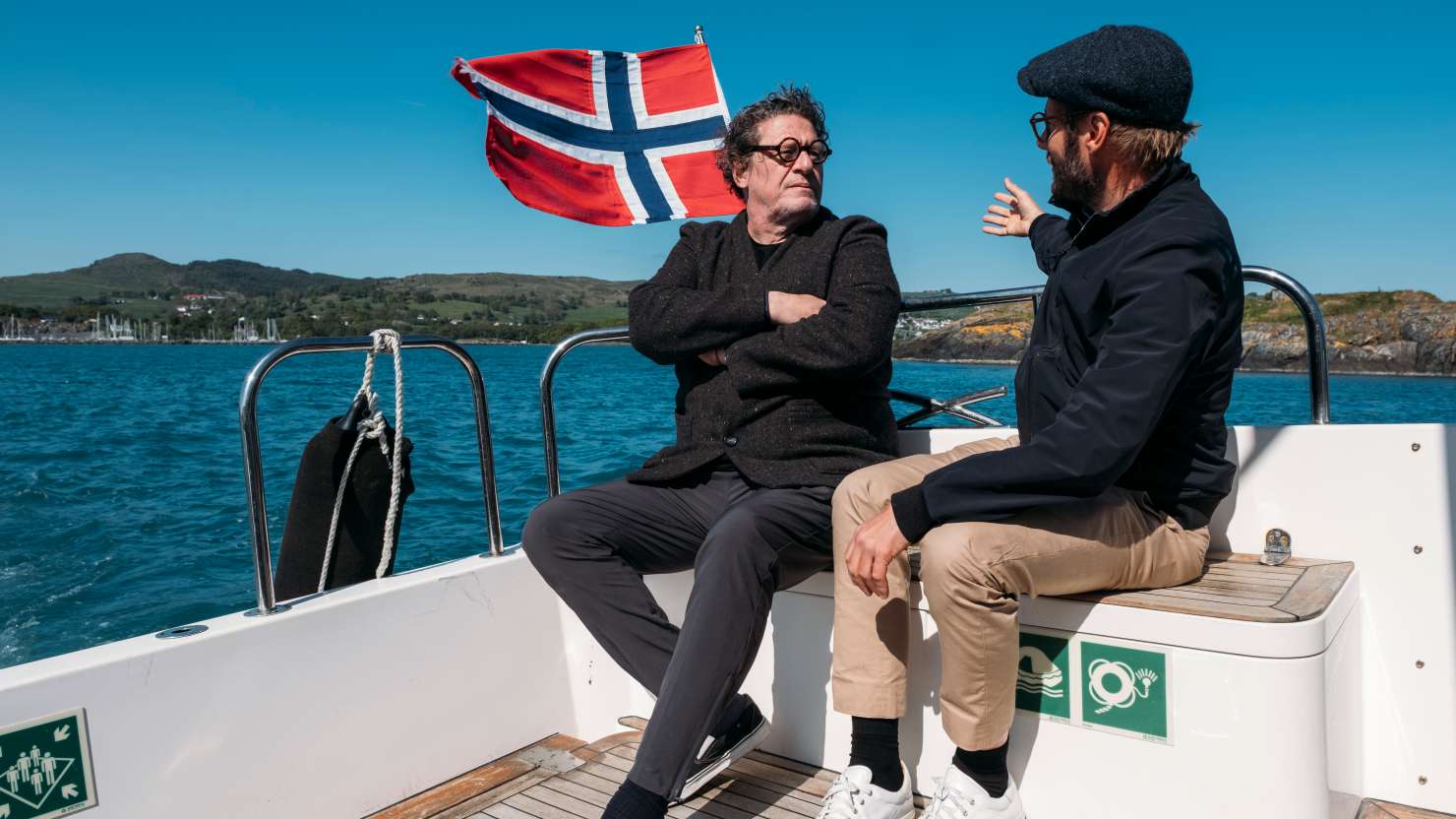
On a sunny June day, we disembarked Iona and boarded a speedboat in Vågen, Stavanger’s harbour, a bustling port with a fish market at its heart. We headed out into the island-dotted waters, the soft summer sun gently warming our faces and the breeze feeling fresh and crisp.
Our first stop was Brimse, a peaceful, car-free island accessible only by sea. Farmer Frode Ljosdal met us off the boat, energetic dog in tow. Frode has been farming this island for some 40 years, and he and Kjartan go way back – Kjartan got married here, and the photography for his first book was shot here, too.
Frode and his team produce vegetables year-round on his 25-hectare farm, supplying produce such as cabbage, beetroot, celeriac and artichokes to restaurants in Stavanger, Bergen and Oslo.
‘We call Brimse a “tropical” island because it’s got its own climate, and the soil is very special,’ says Kjartan. ‘Norway in general has longer days in summer, which makes the flavour of our ingredients more full-bodied.’
Frode, unsurprisingly, is a big advocate of eating local and often hosts young chefs for long stays at his farm. ‘I think it’s very important for chefs to learn about seasonal products so they can use them when they’re available,’ he says.
Today, we get to taste this cornucopia in the form of six stunning dishes where vegetables are the star of the show. They’ve been crafted by chef Edoardo Medda, formerly a head chef at a Michelin-starred restaurant in Stavanger. He took a year away from the restaurant scene to live on the farm to connect more deeply with the land and learn about the cultivation of vegetables. The fruits of chef Medda’s labour are astounding – six dishes packed with kaleidoscopic flavour, aroma and colour. There’s a warm cauliflower porridge with pineapple weed; a millefeuille of salads layered with pesto and herbs; cabbage barbecued with nettle brown butter; braised turnip seasoned with spruce; a variety of tomatoes seasoned with herbs; and a grilled focaccia topped with white cabbage and wild garlic mayonnaise. It’s all washed down with a refreshing glass of rhubarb juice with the perfect balance of sweet and tart.
The combination of the farm’s fresher-than-fresh produce and chef Medda’s Michelin-level skills creates something quite magical, and we’re all suitably appreciative, including Marco: ‘I like the fact that Edoardo is very generous with flavours,’ he says. ‘And the way he assembles it is all very bistro.’
‘As chefs, we’re nothing without farmers,’ muses Edoardo. And as we savour our lunch in the early summer sunshine, gazing through swaying trees to the blue sea beyond, the connection between food and place is abundantly clear.
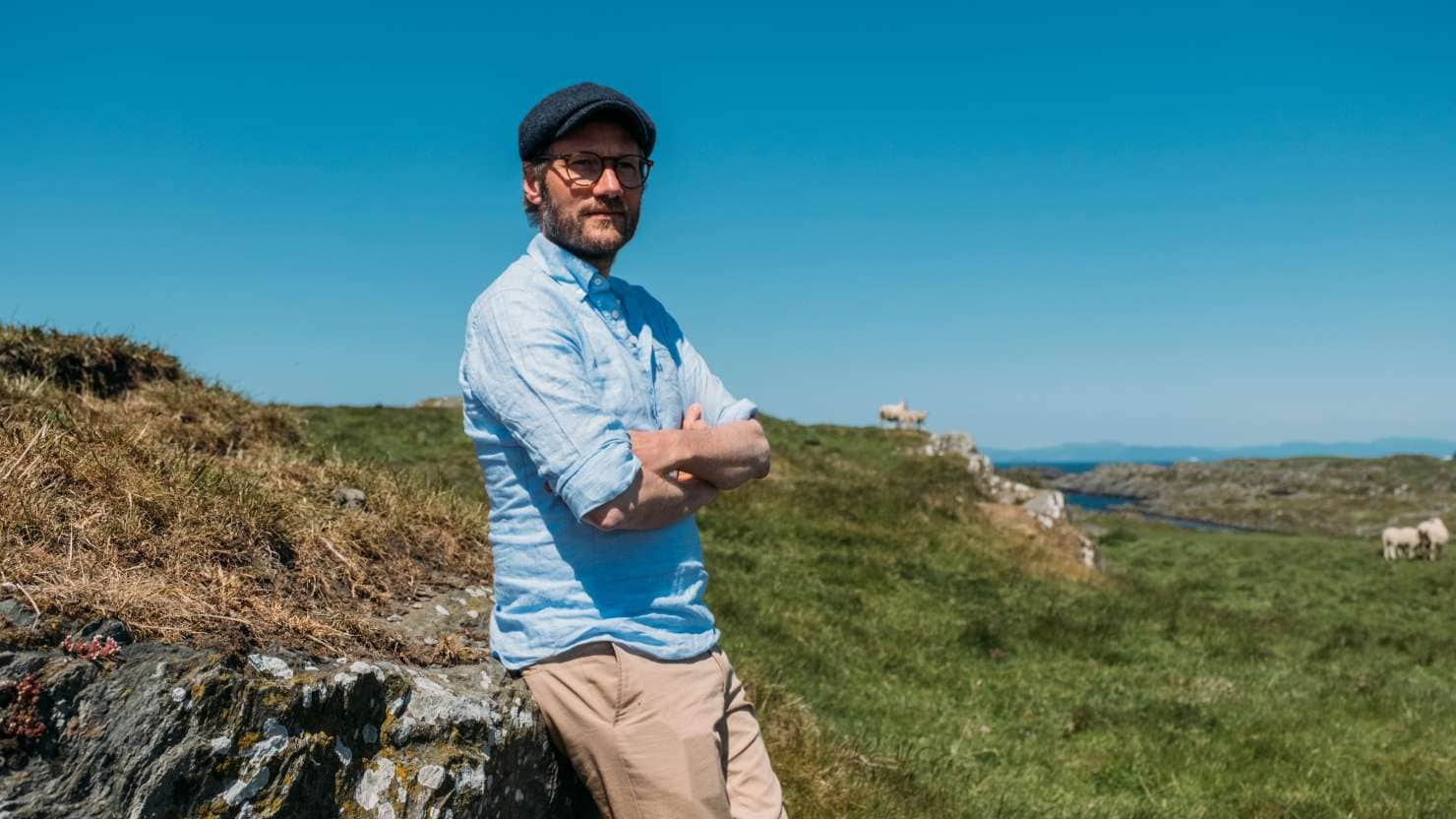
Back in the speedboat, our next destination is Kvitsøy, a volcanic archipelago and Norway’s smallest municipality. It’s reachable by ferry and is popular with Stavanger residents and visitors alike for its cycling and hiking opportunities.
‘Kvitsøy is a typical Norwegian fisherman’s island,’ Kjartan explains. ‘It’s the open sea – there are no trees here because it’s so windy. This is the real Norwegian spirit!’
Our first stop on Kvitsøy is a lobster farm, one of the last in Norway. It’s a charmingly modest building with white clapboard siding and an A-frame roof. Inside, narrow wooden docks sit across the 2-metre-deep waters where lobsters are kept and fed until they’re big enough to be eaten. We’re shown around by Lasse Pallesen and his son Karl Erik, who have been farming lobster here for generations.
‘In the 1950s and 60s there were nine parks like this on Kvistøy,’ says Karl Erik. ‘They called it the lobster island. This farm was run by my great granddad; he used to ship lobsters all over Norway and beyond.’ Kvitsøy’s significant history as a centre for lobster fishing is brought to life at the Kvitsøy hummermuseum (lobster museum), which has exhibits on the industry and life on the island.
We’re soon back in the boat and off to nearby Grøningen restaurant, run by Karl Erik. It’s a sister restaurant to his Fisketorget at Stavanger’s fish market and is only open in the summer months to capitalise on local, seasonal ingredients. Today, it’s all about the seafood. Sitting down to a banquet of delicate king crab, meaty prawns and, of course, butter-soft lobster, we’re treated to a crustaceous feast for the ages.
‘The Norwegian fjords bring a fresh climate, and the climate brings the flavour. Everything is robust – it’s a lot!’ exclaims Kjartan. ‘The cold water from the fjords gives a special freshness and character to all the things that live in it. You can taste it when you eat something from the fjords.’
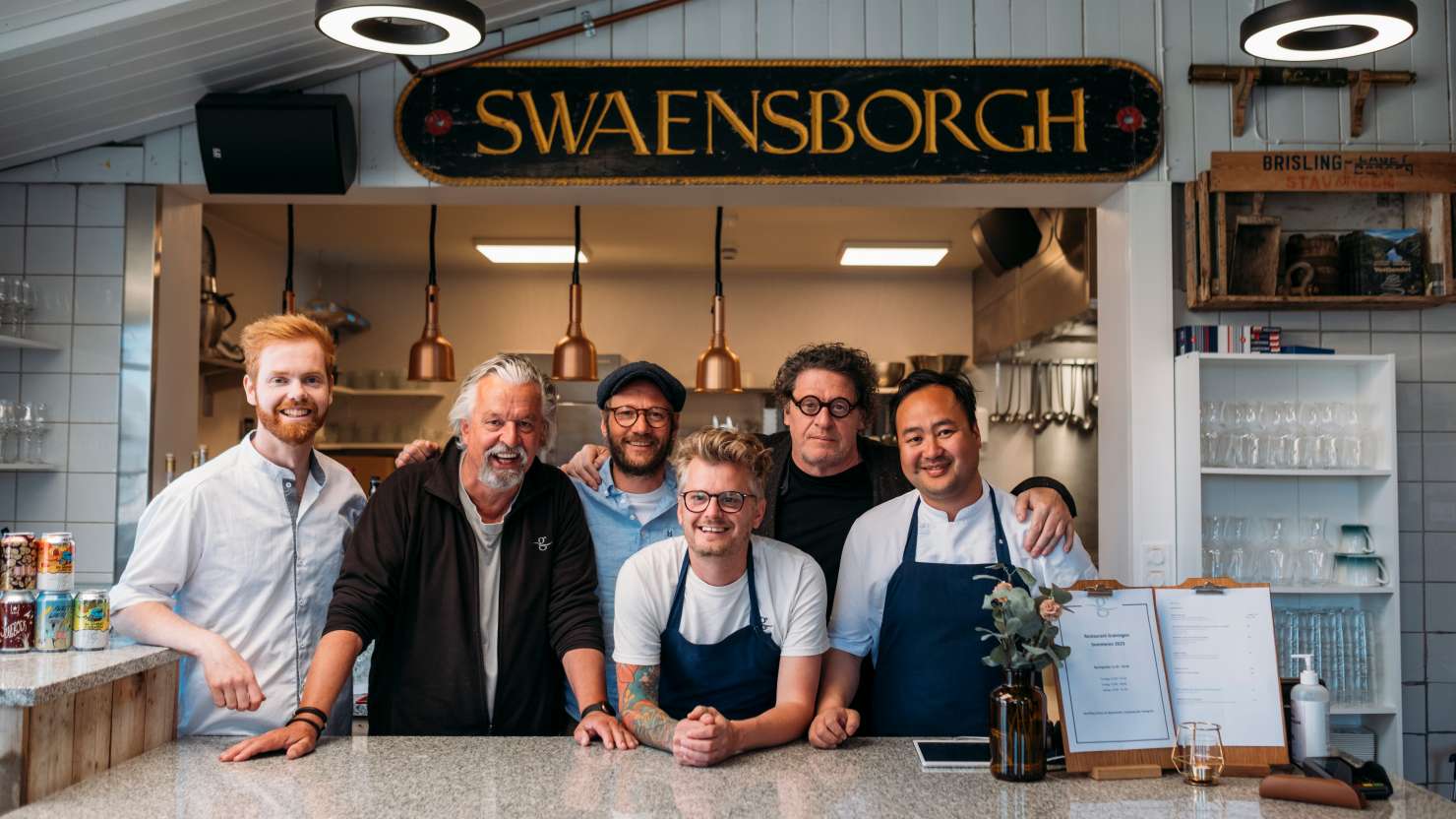
En route back to Iona, we’re all feeling well-fed and full of appreciation for this lesson in provenance.
‘I’ve been sailing with P&O Cruises for nearly 20 years, and the places I’ve been to and the things that I’ve experienced are extraordinary,’ notes Marco. ‘Touring the islands in the fjords today was an example of that... I’m always discovering something new that captures my imagination.’
Back on board Iona, Kjartan’s six-course tasting menu at Epicurean looks even more appetising with the lessons learned on our fjordic foodie odyssey.
‘When I was planning the menu at Epicurean, it was important to me to bring in some of the traditional and natural flavours of Norwegian cuisine,’ says Kjartan. ‘We’re big at pickling, salting, drying and smoking – this was because we needed to survive the cold winters here.
‘For example, the beets on my Epicurean menu – these come from Brimse, and I pickle them in a very traditional way with mustard seeds to bring out their natural flavour. The main course on my menu is lamb. The lambs here eat the grass by the sea, which is fed by the minerals and the saltiness from the sea. If you close your eyes, you could know the lamb was from this area by its taste.’
For Kjartan, the opportunity to show his culture through food brings him joy and aligns with his local-focused cooking ethos.
‘Being a chef and using beautiful ingredients developed in a natural way gives me a lot of inspiration and meaning in my cooking,’ he says. ‘It’s an honour and a pleasure for me to bring Norwegian food culture to guests on board.’
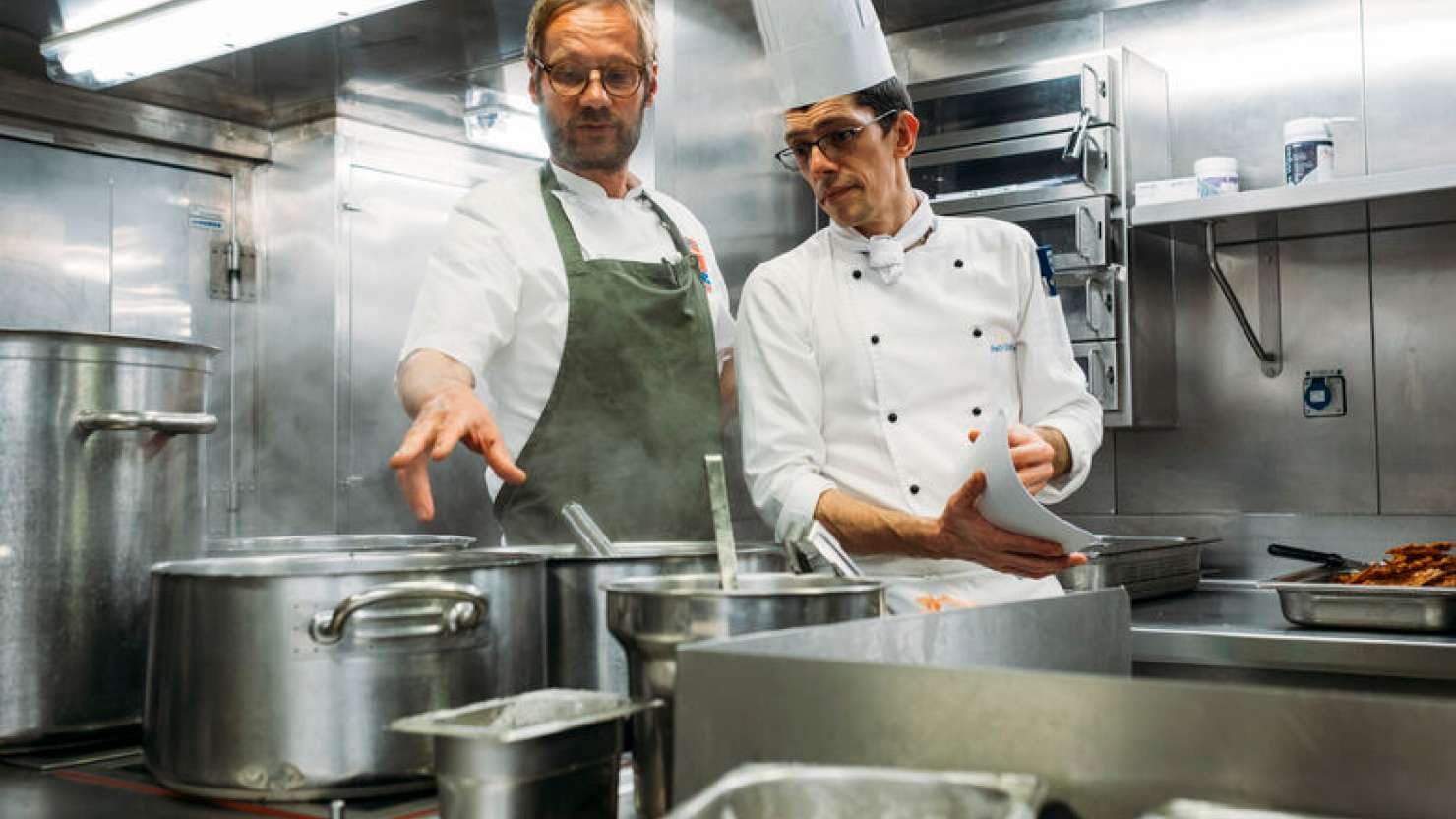
of
Don’t miss out! Sign up for latest news, offers and competitions from P&O Cruises.